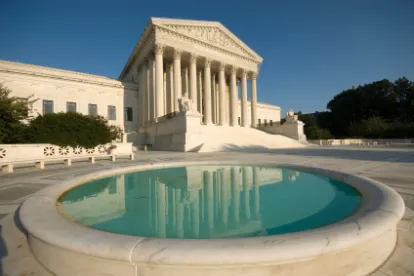Public discussion of environmental law predictably focuses on the physical environment, including newspaper articles replete with references to climate change, lead in drinking water, recycling, or stories about individual species of endangered animals such as dusky gopher frogs. Legal decisions also discuss these issues. However, more often than not, they also address the questions of what agencies are authorized to do under statutes passed by Congress and which branch of government is best positioned to decide what is appropriate.
The U.S. Supreme Court’s first environment-related decision of this term, Weyerhaeuser v. U.S. Fish and Wildlife Service, is notable for being decided on “who decides” grounds. The “who decides” decision reiterates that when someone feels that a regulatory agency harmed them, judicial review is typically available.
In Weyerhaeuser, the Court evaluated whether the U.S. Fish & Wildlife Service’s (FWS) interpretation of the Endangered Species Act (ESA) was appropriate. More specifically, parties who owned land in Louisiana where dusky gopher frogs had not lived for decades challenged the FWS’s determination that their land was “critical habitat” for the protection of the dusky gopher frog species. The landowners stated that as their lands were no longer physically suitable to support dusky gopher frogs, the FWS erred when it determined that their lands were “essential” for the preservation of the species, a necessary element of “critical habitat” as defined under section 1532 of the ESA. The decision mattered to the landowners as the economic impact of their lands being classified as “critical habitat” ran into tens of millions of dollars.
Before Weyerhaeuser was argued, some commentators (including us) pondered whether the decision would turn on Chevron deference, which is the idea that an agency interpretation of a statutory provision that is silent or ambiguous with respect to a specific issue is entitled to judicial deference. But, Chevron deference issues never appeared to drive the Court’s decision. The Court found that the lower courts had failed to evaluate whether the FWS properly determined that the area in question qualified as “habitat” in order to be considered as a “critical habitat” under the ESA. The Supreme Court remanded that issue to lower courts for their further consideration. No surprise yet.
Even though Chevron deference was never discussed, the Court’s discussion of “who decides” an issue that the government claimed to be unreviewable is notable. When the FWS evaluated what areas constituted “critical habitat” for the dusky gopher frog, Section 4(b)(2) of the ESA, 16 U.S.C. § 1533(b)(2), required the FWS to “tak[e] into consideration the economic impact . . . of specifying any particular area as critical habitat” and authorized it to “exclude any area from critical habitat [if FWS] determines that the benefits of such exclusion outweigh the benefits of specifying such area as part of the critical habitat.” Weyerhaeuser claimed the FWS improperly weighed the costs and benefits, because the FWS weighed the costs of designating Weyerhaeuser’s land alone against the benefits of designating far broader areas of land as “critical.” While the FWS claimed it weighed costs and benefits appropriately, it also claimed that its decision weighing costs and benefits had been committed to its discretion by the ESA and was thus unreviewable by courts. The Fifth Circuit agreed with the FWS and never considered Weyerhaeuser’s arguments regarding costs and benefits.
The Supreme Court disagreed and held that the federal Administrative Procedure Act (APA) creates a basic presumption of judicial review for one suffering a legal wrong. The Court held that agency actions can almost always be challenged in court except where “the relevant statute is drawn so that a court would have no meaningful standard against which to judge the agency’s exercise of discretion[.]” Section 4(b)(2) of the ESA provided a standard. Specifically, it states that the FWS:
shall designate critical habitat . . . after taking into consideration the economic impact, the impact on national security, and any other relevant impact, of specifying any particular area as critical habitat. The Secretary may exclude any area from critical habitat if he determines that the benefits of such exclusion outweigh the benefits of specifying such area . . . unless he determines . . . that the failure to designate such area as critical habitat will result in the extinction of the species concerned.
This language, the Court noted, created a process that could be reviewed and Weyerhaeuser’s contentions that the FWS “ignored some costs and conflated the benefits [of designating Weyerhaeuser’s land] with the benefits of designating all of the proposed critical habitat . . . [is] the sort of claim that federal courts routinely assess when determining whether to set aside an agency decision as an abuse of discretion.” As with the habitat issue, the cost-and-benefits issue was likewise remanded to lower courts for further consideration.



 />i
/>i

